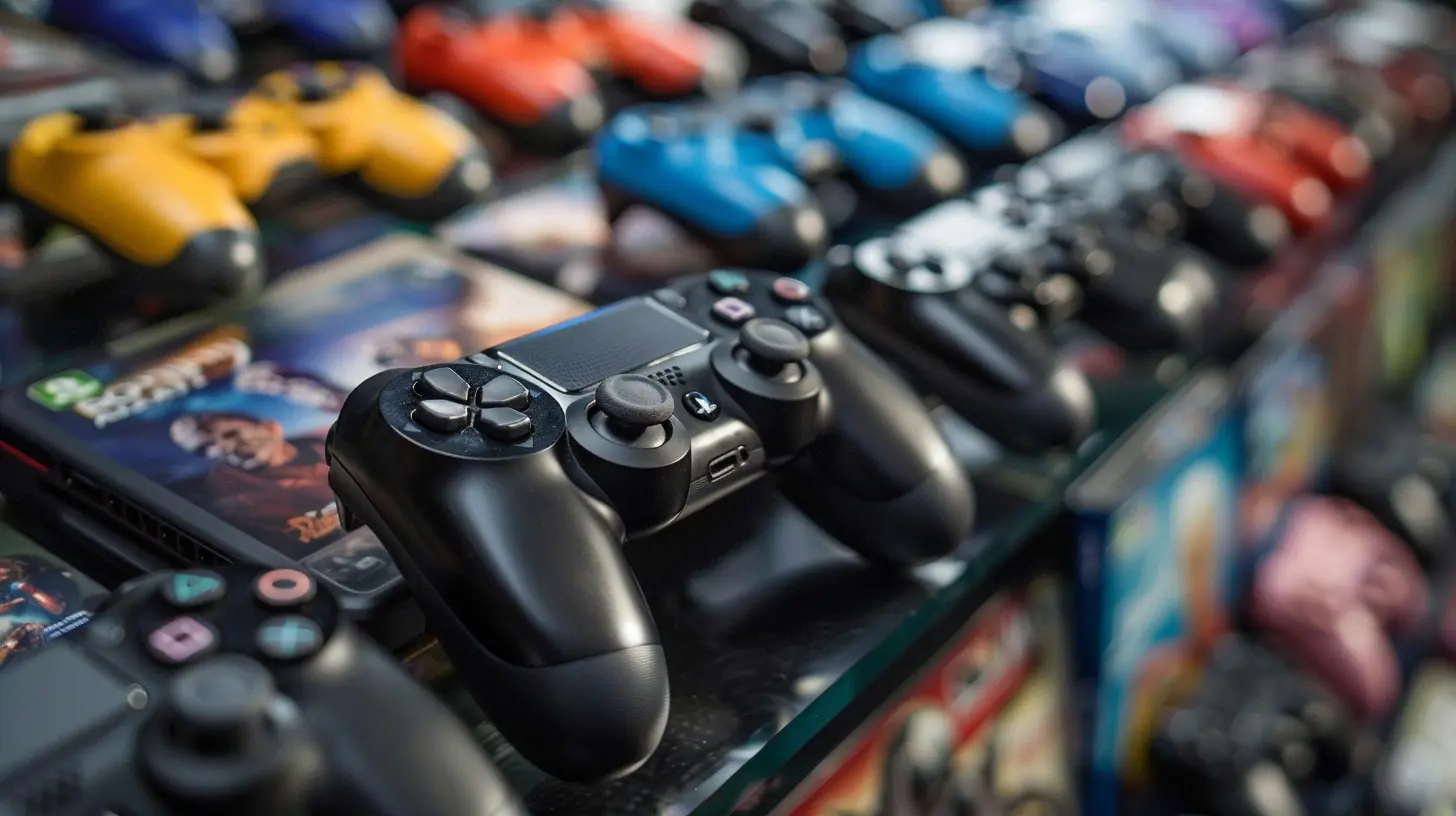Are In-Game Purchases Ruining Competitive Balance in eSports?
11 November 2025
Let’s face it—video games aren’t what they used to be.
Gone are the days when you bought a game once, popped in the disc (or hit download), and enjoyed everything it had to offer. Welcome to the age of in-game purchases, the shiny, sometimes not-so-subtle elephant in the room of modern gaming—especially when it comes to competitive eSports.
So here’s the million-dollar question: Are in-game purchases ruining competitive balance in eSports?
Grab your favorite gaming chair and buckle in, because we're diving deep into this one.
🎮 A Quick Look at In-Game Purchases
Before we get into the nitty-gritty, let’s set the stage.In-game purchases can be anything from cosmetic items like skins and emotes to game-altering features like weapons, characters, skills, and more. These purchases can come in various forms: loot boxes, season passes, pay-to-win bundles—you name it.
Some are harmless, purely visual. Others? They’re game-changers—literally.
So where’s the line between fun customization and unfair advantages? That's what we’re here to talk about.
🏆 What Makes eSports "Competitive"?
To understand the issue, let’s first define what makes an eSport competitive.eSports are all about fair play, skill-based results, and players competing on an equal playing field. It’s like a 100-meter race. Everyone starts at the same line, with the same shoes, same track. The winner? The fastest runner.
Now imagine one runner gets a jetpack... just because they paid extra.
Sound unfair? That’s the issue with in-game purchases.
🕹️ The Rise of Pay-to-Win Mechanics
We’ve seen the term “Pay-to-Win” thrown around a lot. And it’s not just internet rage—it’s a real concern.In competitive titles like shooters, MOBAs, and card games, some in-game purchases enhance performance. Let’s break down the different ways this happens:
📦 Unlocking Powerful Content Faster
Many games let you unlock weapons, abilities, or characters through gameplay. But it takes time—lots of it. Then comes the shortcut: instant unlocks with money.While grinders sweat hours to get top-tier gear, someone else gets it in seconds by opening their wallet. That’s not skill. That’s a shortcut.
🔫 Bonus Stats and Boosted Abilities
Some games go even further and sell items that directly improve stats—stronger attacks, faster reloads, more health. Suddenly, it’s not just about who aims better, it’s about who pays more.💡 Exclusive Access
Ever heard of “early access” to new characters or maps? Sometimes, players can purchase this access before others. In a high-stakes eSports environment, this can be a game-breaking advantage. Knowing a map or mastering a new champion early? That’s huge.
🤔 But What About Cosmetics? Isn’t That Harmless?
Sure, cosmetics don't directly affect gameplay. Skins, dances, and emotes are mostly for style points.But even cosmetic purchases can mess with competitive play in subtle ways:
🧥 Visibility Advantage
Some skins are harder to see on certain maps. Others blend in or change hitboxes slightly. Sounds crazy? Ask a pro player how much visibility matters in a high-level match.💰 Psychological Impact
Players rocking premium gear may come off as more seasoned or intimidating. In turn, this could influence how opponents play. It might not be a major factor, but in games where split-second decisions count—it matters.🎯 Competitive Integrity Matters in eSports
eSports isn’t just fun and games anymore. We’re talking about a billion-dollar industry with professional teams, sponsorships, careers, and yes—millions of fans.So maintaining competitive integrity is crucial.
If audiences or players start sensing that money matters more than skill, the credibility of the competition crumbles. Imagine if the NBA allowed players to buy extra points during a game. Madness, right? Same goes for eSports.
🛡️ Developers Walking a Tightrope
To be fair, game developers aren’t trying to ruin eSports.Most of them are just trying to keep the lights on. Games are super expensive to develop, especially big multiplayer titles. In-game purchases help fund:
- Server maintenance
- Regular updates
- Anti-cheat systems
- Competitive events and prize pools
But here’s the catch—they must strike the right balance.
Monetization isn’t evil. But when it starts affecting gameplay and competitiveness, that’s where things go off the rails.
🌍 Examples from Popular eSports Titles
Let’s look at how different eSports giants handle in-game purchases.🔥 League of Legends
Riot Games has nailed it with cosmetics-only purchases. All champions can be unlocked through gameplay, and buying them doesn't give you an edge. The game thrives on skill, strategy, and teamwork—not your skin collection.🚀 Valorant and CS:GO
Both games offer cosmetic weapon skins with zero gameplay impact. Skill wins, not skin rarity. That’s how it should be in eSports.🧙♂️ Hearthstone
Here’s where it gets tricky. In Hearthstone, buying more card packs gives you access to stronger cards faster. Yes, you can earn them through play—but paying means building top-tier decks quicker. That’s a definite edge in ranked and tournament play.🤖 Mobile eSports – A Slippery Slope
Many mobile competitive games like Mobile Legends or Clash Royale have in-game purchases that can give distinct advantages. It’s not unusual to see players “whaling” their way to the top.🙋♂️ What Can Be Done About It?
Good news—there are solutions.Developers, players, and even tournament organizers can all take steps to preserve competitive balance.
💡 Transparency is Key
Game companies should be 100% clear about what can be bought and whether it impacts gameplay. If players know what they’re walking into, it builds trust.🦺 Separate Competitive Modes
Many games introduce separate modes for ranked or eSports play where all items, abilities, and characters are unlocked and equal. This ensures that all competitors have the same tools.🧠 Skill-Based Matchmaking
Smart matchmaking systems can group paying players separately or ensure games remain balanced even if someone has premium gear.🏁 Tournaments with Equal Loadouts
Tournaments can enforce rules that limit or ban pay-to-win elements. Giving every participant the same resources keeps it all about the gameplay.🌟 The Bright Side – Hope for a Fairer Future
The gaming community is more vocal than ever. And that’s a good thing.Gamers aren’t afraid to call out pay-to-win mechanics. And when the outcry is loud enough, developers listen. Just look at what happened with games like Battlefront II.
We’re seeing more titles move towards fair monetization—offering season passes, skins, and value-added content that doesn’t mess with balance. Even better? Games that reward skill over spending are thriving in the eSports scene.
🤝 Final Thoughts: It’s All About Balance
So... are in-game purchases ruining competitive balance in eSports?Not always. But they definitely can.
When implemented poorly, they skew competition, frustrate players, and damage the integrity of the game. But when done with care and transparency, monetization doesn’t have to be the villain of the story.
At the end of the day, gamers want a fair shot. Whether they’re grinding ranked games from their bedroom or competing in an arena for millions of dollars, the dream is the same: Let the best player win.
So here’s hoping for a future where skill—not the size of your credit card limit—decides victory.
all images in this post were generated using AI tools
Category:
In Game PurchasesAuthor:

Leandro Banks
Discussion
rate this article
2 comments
Foster McKellar
Great article! It’s essential to keep eSports fun and fair! Let’s champion skill over spending for a brighter gaming future!
November 15, 2025 at 5:58 AM

Leandro Banks
Thank you! I completely agree—ensuring fairness and skill in esports is crucial for a vibrant gaming community.
Beau Alexander
Interesting perspective! I'm curious how in-game purchases impact fairness and player experience in eSports.
November 14, 2025 at 4:26 PM

Leandro Banks
Thank you for your comment! In-game purchases can create disparities in player abilities and resources, potentially skewing competitive balance and impacting overall player experience by favoring those who spend more.


